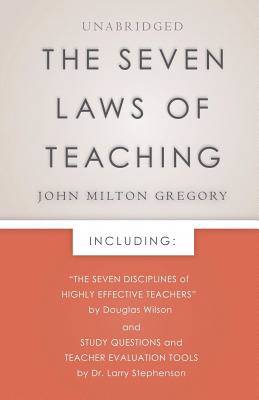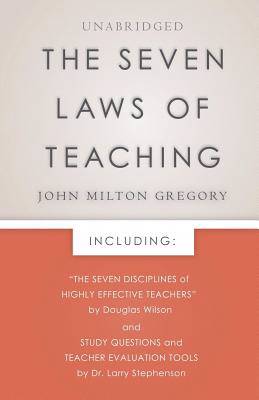
- Afhalen na 1 uur in een winkel met voorraad
- Gratis thuislevering in België vanaf € 30
- Ruim aanbod met 7 miljoen producten
- Afhalen na 1 uur in een winkel met voorraad
- Gratis thuislevering in België vanaf € 30
- Ruim aanbod met 7 miljoen producten
Zoeken
Omschrijving
The Seven Laws of Teaching by John Milton Gregory Foreword "The Seven Disciplines of Highly Effective Teachers" by Douglas Wilson Evaluation Tools and Study Questions by Dr. Larry Stephenson Don't miss this vital book for teachers! For decades, John Milton Gregory's The Seven Laws of Teaching has been an essential guide for classical educators everywhere, whether in schools, at home, in co-ops, or online. You've never seen an edition like this: In 1954, Baker Book House published a revised edition of the text that "abridged" much of the Christian content and emphasis: we've restored The Seven Laws of Teaching to its original 1886 text. Not only does your Canon Press version give the unabridged first edition text, but we've also added a number of invaluable tools not available anywhere else: A powerful forward by Douglas Wilson, "The Seven Disciplines of Highly Effective Teachers," Study Questions after each chapter by Dr. Larry Stephenson and five helpful appendices: Appendix A: List of the Seven Laws of Teaching. Appendix B: Self-Assessment Tool for Teachers by Dr. Stephenson Appendix C: Sample Teacher Observation Form by Dr. Stephenson Appendix D: Answers to the Study Questions Appendix E: Endnotes on Historical Figures
Specificaties
Betrokkenen
- Auteur(s):
- Uitgeverij:
Inhoud
- Aantal bladzijden:
- 160
- Taal:
- Engels
Eigenschappen
- Productcode (EAN):
- 9781591281764
- Verschijningsdatum:
- 24/06/2014
- Uitvoering:
- Paperback
- Formaat:
- Trade paperback (VS)
- Afmetingen:
- 140 mm x 216 mm
- Gewicht:
- 190 g

Alleen bij Standaard Boekhandel
+ 22 punten op je klantenkaart van Standaard Boekhandel
Beoordelingen
We publiceren alleen reviews die voldoen aan de voorwaarden voor reviews. Bekijk onze voorwaarden voor reviews.











